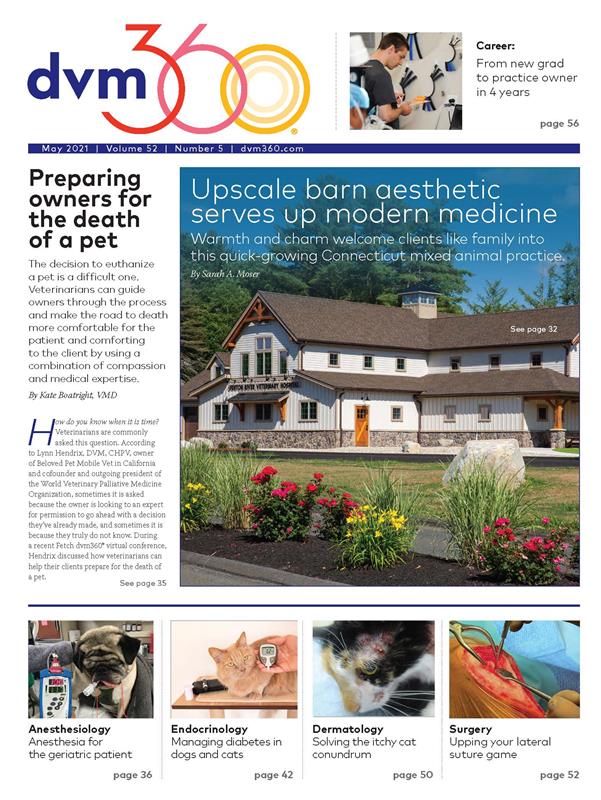The Dilemma: Time to say goodbye
How should veterinary clinics confront a blatantly racist client?
Lincoln Animal Hospital, an urban small animal clinic, has served a large and diverse community for 18 years. The hospital’s core mission has always been to provide compassionate care and personalized client interaction, attributing to its longtime success.
Four administrators, including the owner, managed the hospital. During the coronavirus disease 19 (COVID-19) pandemic, management observed that clients with sick pets and those concerned about the virus often arrived stressed out. Some were rude, impatient, and even aggressive with team members. In these scenarios, administrators stepped in to calm the waters.Rather than “firing” a client, the goal was to de-escalate the situation. The hospital owner disagreed with firing difficult clients. Confrontations were seen as a failure on the part of the hospital administration, not the client. That was until one shocking client encounter.
A new client had brought his dog to the clinic on several occasions. He generally requested certain doctors to care for his pet, which was not unusual, and the client’s preferences were honored when feasible. Due to COVID-19 protocols and curbside service, clients interacted with technicians more than they did in the past.
After greeting technicians at curbside, this particular client would often request an alternate technician to assist him. Due to the pet’s medical condition, he was seen on somewhat of a regular basis. It was noted that the owner’s request to change technicians in 4 previous visits only occurred when the staff member was of Latinx descent. The hospital director did not think that these requests were coincidental and decided it was time to discuss the situation with the pet owner.
When the client arrived for his next scheduled visit, the hospital director asked to speak with him before the pet was escorted in for medical care. The director tactfully inquired as to why the pet owner requested technician changes only when Latinx staff members were involved. The pet owner replied by saying that he was, “more comfortable with some technicians than others.“ The director then asked if the fact that certain staff members were Latinx was a reason for his requests. The pet owner replied, “You said that not me.”
The hospital director told the client that all of the Lincoln Animal Hospital staff were highly qualified and capable of caring for his pet. He added that if the client continued to select staff members based on race, the clinic would no longer provide medical care to his pet and that he would gladly provide all of the pet’s medical records and recommend 3 veterinary clinics in nearby locations. The owner went on to say, “Because of this you don’t want me to come back? “The director simply said, “yes,” and the pet owner left, reciting a few expletives on his way out. Then the staff promptly compiled the pet’s medical records and veterinary clinic recommendations. This information was then emailed to the pet owner, allowing his pet to continue with uninterrupted medical care.
The medical director spoke to the staff about how this issue was handled, explaining that because their hospital had such a large clientele, they were bound to encounter some racist or prejudice clients. As much as he opposed firing clients—racist behavior was not to be tolerated. Nevertheless, every effort should be made to assist the client in procuring alternative veterinary care. That is the professional and ethical standard that must be maintained, yet some staff members felt their director was far too gracious. We would like to know your thoughts.
Do you agree with the medical director’s decision? How would you have handled the situation? Let us know your thoughts by emailing dvm360news@mmhgroup.com.
Dr Rosenberg’s Response:
In the diverse world of veterinary medicine, the title clinician is pivotal. It implies the need and ability to work interactively with pets and their owners in real-time. An effective veterinary clinician must be professional, analytical, and calm. Pet owners are often understandably stressed, and pets can be challenging when frightened. The medical director’s response to a client’s overt racism met all of these criteria. He made sure there was an avenue available for the pet’s future care. He also acted professionally and did not escalate the situation. I must admit that when veterinarians are confronted with similar scenarios, it is very challenging to exercise restraint. Hopefully, this cautionary dilemma will assist my fellow veterinarians in the future.
Marc Rosenberg, VMD, is director of Voorhees Veterinary Center in Voorhees, New Jersey. Although many of the scenarios Rosenberg describes in his column are based on real-life events, the veterinary practices, doctors, and employees described are fictional.

